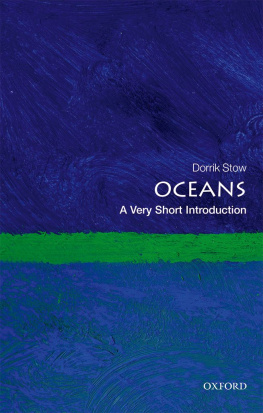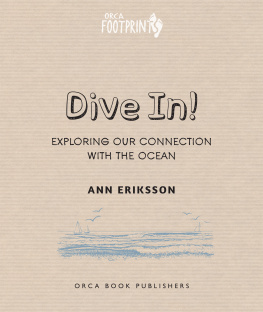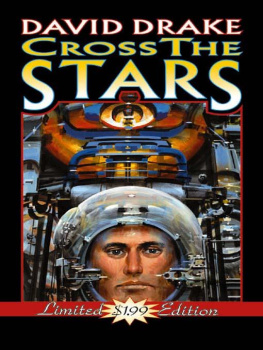Stow - Vanished ocean how Tethys reshaped the world
Here you can read online Stow - Vanished ocean how Tethys reshaped the world full text of the book (entire story) in english for free. Download pdf and epub, get meaning, cover and reviews about this ebook. City: Oxford, year: 2012;2010, publisher: Oxford University Press, genre: Romance novel. Description of the work, (preface) as well as reviews are available. Best literature library LitArk.com created for fans of good reading and offers a wide selection of genres:
Romance novel
Science fiction
Adventure
Detective
Science
History
Home and family
Prose
Art
Politics
Computer
Non-fiction
Religion
Business
Children
Humor
Choose a favorite category and find really read worthwhile books. Enjoy immersion in the world of imagination, feel the emotions of the characters or learn something new for yourself, make an fascinating discovery.

- Book:Vanished ocean how Tethys reshaped the world
- Author:
- Publisher:Oxford University Press
- Genre:
- Year:2012;2010
- City:Oxford
- Rating:4 / 5
- Favourites:Add to favourites
- Your mark:
- 80
- 1
- 2
- 3
- 4
- 5
Vanished ocean how Tethys reshaped the world: summary, description and annotation
We offer to read an annotation, description, summary or preface (depends on what the author of the book "Vanished ocean how Tethys reshaped the world" wrote himself). If you haven't found the necessary information about the book — write in the comments, we will try to find it.
Stow: author's other books
Who wrote Vanished ocean how Tethys reshaped the world? Find out the surname, the name of the author of the book and a list of all author's works by series.
Vanished ocean how Tethys reshaped the world — read online for free the complete book (whole text) full work
Below is the text of the book, divided by pages. System saving the place of the last page read, allows you to conveniently read the book "Vanished ocean how Tethys reshaped the world" online for free, without having to search again every time where you left off. Put a bookmark, and you can go to the page where you finished reading at any time.
Font size:
Interval:
Bookmark:
VANISHED OCEAN
HOW TETHYS RESHAPED THE WORLD

DORRIK STOW


Great Clarendon Street, Oxford OX2 6DP
Oxford University Press is a department of the University of Oxford.
It furthers the Universitys objective of excellence in research, scholarship,
and education by publishing worldwide in
Oxford New York
Auckland Cape Town Dar es Salaam Hong Kong Karachi
Kuala Lumpur Madrid Melbourne Mexico City Nairobi
New Delhi Shanghai Taipei Toronto
With offices in
Argentina Austria Brazil Chile Czech Republic France Greece
Guatemala Hungary Italy Japan Poland Portugal Singapore
South Korea Switzerland Thailand Turkey Ukraine Vietnam
Oxford is a registered trade mark of Oxford University Press
in the UK and in certain other countries
Published in the United States
by Oxford University Press Inc., New York
Dorrik Stow 2010
The moral rights of the author have been asserted
Database right Oxford University Press (maker)
First published 2010
All rights reserved. No part of this publication may be reproduced, stored in a retrieval system, or transmitted, in any form or by any means, without the prior permission in writing of Oxford University Press, or as expressly permitted by law, or under terms agreed with the appropriate reprographics rights organization. Enquiries concerning reproduction outside the scope of the above should be sent to the Rights Department, Oxford University Press, at the address above
You must not circulate this book in any other binding or cover and you must impose the same condition on any acquirer
British Library Cataloguing in Publication Data
Data available
Library of Congress Cataloging in Publication Data
Library of Congress Control Number: 2010922420
Typeset by SPI Publisher Services, Pondicherry, India
Printed in Great Britain
on acid-free paper by
Clays Ltd., St Ives plc
ISBN 9780199214280
1 3 5 7 9 10 8 6 4 2
FOR Claire
This is the story of a lost ocean, which is known to geologists as the Tethys Ocean. It lasted for 250 million years of Earth history, dominating the equatorial world and playing host to the changing life and events that have shaped the world we inhabit today. As continents moved and sea levels rose, Tethys waters swept north across large tracts of Europe, Asia and North America, and south over Africa and South America. As sea level fell so Tethys receded. Continent ground against continent and Tethys was finally squeezed out of existence just 5 million years ago. But there is a very rich legacy from this past ocean hidden in the rocks of many continents and buried deep beneath the ocean floors of the present-day world.
For many years of my professional career as a geologist and oceanographer, I have worked on rocks on land or drilled into sediments beneath the seas that were once a part of the Tethys Ocean. Slowly and carefully, I have gathered countless clues and amassed a large body of evidence. Sometimes I was looking directly for such evidence, but equally often I was working on some altogether different topic when a new piece of the jigsaw puzzle appeared and neatly slotted into place. That is the way of science. A great many other scientists over many years have been involved, directly or indirectly, in research on the Tethys. The results of their research, like my own, are published in scientific journals and books across the world.
The evidence is incontrovertible. This is a true story or at least as true a rendition of the scientific facts as we can produce from our current understanding. It is not some fanciful musing or creative science fiction, but as close to an accurate account of Tethys history as I can make it. And yet there were volcanic eruptions without parallel in todays world; mass extinctions that almost ended all life on Earth; dramatic radiation of new species in a fecund ocean known only from their tantalizing fossil remains; black death in the Tethys that led to the worlds richest oil reserves; and a time when oceans rose up and spread across the planet until only 18% remained as dry land.
All this and more, I have tried to capture as a storyline through time. The book starts with an explanation of the sorts of clues we can find in the rocks, and the information they can provide, and introduces the broad workings of plate tectonics and the all-important measurement of time. Each subsequent chapter then presents a new period of the Tethys, from the building of the supercontinent of Pangaea that marks the beginning of Tethys to its eventual demise as a gaping hole and blistering salt inferno somewhere between Africa and Europe. I have used maps judiciously through the text to help paint a portrait of evolution and change. In particular, the maps at the beginning of each chapter show a reconstruction of the world and the Tethys Ocean for one snapshot of the time covered in that chapter. There is a geological timescale and Tethys timeline in Chapter 1 to help the reader master the huge timescales involved and the names that geologists use as shorthand for different periods in the past. There is also a brief glossary of the more obscure technical terms, which I have introduced of necessity through the text.
In addition to my own research, the sources of scientific information used in reconstructing this history are altogether too numerous to detail in a book of this nature. I have therefore decided to abandon the idea of having an endless series of footnotes or endnotes referring to specific scientific articles. Instead, there is a short bibliography with reading suggestions for those wishing to delve further into the science behind the story. I have also introduced in the text just a few of the pioneers in geological science, whose work has made this historical reconstruction possible, as well as some of the many colleagues and friends who have helped me in the field and at sea.
| August 2009 | Dorrik Stow |
Claire thank you for your love and support always, for your understanding and companionship, for your constant joy and enthusiasm in the field, and for being my wife. Thank you also for your insightful comments on an earlier version of the manuscript. To my children Jay, Lani and Kiah thank you for your love and youthful wisdom, for tolerating the many field trips and also for critically reading the manuscript. To my parents Terry and Jill thank you for everything.
I gratefully acknowledge the various institutes in which I have worked that have wittingly or unwittingly lent their support to my Tethyan research. These include: the universities of Edinburgh, Nottingham and Southampton in the UK; Dalhousie University in Canada, Universit de Bordeaux in France; The British National Oil Corporation in Glasgow; British Petroleum in London; and the Instituto de Oceanografia de Espanol in Malaga. Lastly and, most importantly, my full appreciation to Heriot Watt University in Edinburgh, where I currently work as the Ecosse Director and which has provided full technical and secretarial support as well as intellectual stimulation. John Wright expertly drafted the paleoworld maps that open each chapter.
Next pageFont size:
Interval:
Bookmark:
Similar books «Vanished ocean how Tethys reshaped the world»
Look at similar books to Vanished ocean how Tethys reshaped the world. We have selected literature similar in name and meaning in the hope of providing readers with more options to find new, interesting, not yet read works.
Discussion, reviews of the book Vanished ocean how Tethys reshaped the world and just readers' own opinions. Leave your comments, write what you think about the work, its meaning or the main characters. Specify what exactly you liked and what you didn't like, and why you think so.






